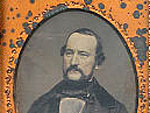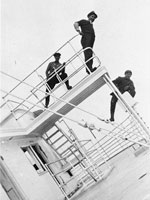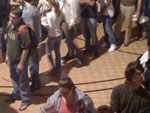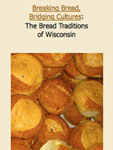Turning Students into Historians

Milwaukee, WI, has an important civil rights history that not many people know about. In the 1960s, battles raged here over open housing and school desegregation, and teens led much of the movement. Decades later, we still suffer from racial and economic segregation, but how many of our students can explain why? And what would it mean to them to find out that in 1960s Milwaukee, youth protested such inequality?
In 2010, a project team of archivists, digital librarians, students, and historians launched the March on Milwaukee Civil Rights History Project, an archive of primary sources and contextual materials. But how could we use this resource to help youth learn about their city’s past and feel invested in their communities? This question led to an unlikely partnership between the University of Wisconsin-Milwaukee History and Archives Departments; an arts education nonprofit, Arts@Large; and a class of high school students with one very dedicated teacher. I say unlikely for two reasons. First, not everyone would combine social studies curriculum with the arts. Second, digital archives are valued for their accessibility, and instead of scaling our efforts up to reach the widest audience, we went the other way and decided to work closely with a dozen students from a school for at risk youth.
The goal of the project was for students to research, design, and build an exhibition on Milwaukee civil rights history. The students had little background in primary source materials, were not terribly fond of history, and knew nothing about museum studies. We started by bringing the students to the university campus and teaching them how to use primary sources. We directed them to certain sources but we also gave them time to explore the text documents, oral history interviews, film footage, and photographs in the collection. Over time it became clear to the students that the research was necessary for the more personally meaningful parts of the project to occur.
The students then worked very closely with museum educator Linda D’Acquisto, author of Learning on Display. She taught them to think in terms of big questions and ideas that could translate into visual displays. Their teacher, Kelly DiGiacinto, pulled in other resources, including local museums, and the students began to ask if they could interview some of the former activists themselves. It was at this point that the students started taking ownership of the project. Listening to recorded oral history was no longer enough; they wanted to take on the role of historian and start asking their own questions. By the time some of the local activists visited the classroom, the students thought of them more as rock stars than relics.
The students titled their exhibition "March to Equality." In addition to the humanities-based research and the construction of the exhibits, they also wrote poetry, created collage, and gave performances that included freedom songs, marching, and skits. The students wanted to make sure that their research showed, so they created QR codes leading viewers back to the primary sources on the archive website. During the exhibition opening, the kids stationed themselves at each of the displays and acted as docents for visitors.
Because the students became so deeply invested in the project, they now see their city in a different way. A social studies teacher who visited the exhibit said, "The passion and knowledge that the students . . . showed was truly amazing. I was also impressed by their poise and delivery of the information which connects to language arts standards.” The teacher goes on, “The student who was my tour guide said that this experience ‘gave her pride for the city she lived in and showed her that there are people fighting for what is right instead of just the horrible, negative things you see on the news.’ I thought she captured the success of the project in those words . . ."
To watch the students grow over the course of the project has been one of the most rewarding experiences in my career. They not only learned about local civil rights history through primary sources and oral histories, they have taken ownership of that history. They now see themselves as Milwaukee's new leaders. And they have not stopped. In December, they just finished leading a series of Milwaukee civil rights bus tours.
Explore the March on Milwaukee Civil Rights History Project's resources for yourself in Website Reviews.
How did segregation affect your local area? Professor Anthony Pellegrino dug deep into the history of a segregated school he passed every day. Turn to your local museums and historical societies to make your own discoveries!
Don't have the time or resources to help your students create a physical exhibit? Try online tools like Museum Box, and guide students through curating digital exhibits.



 Of course, they realize very quickly that the only way to do this is to use sign language—so many fingers for the month and then the day once they have found others born in the same month. After a few minutes of positioning and repositioning, from the first in line to the last, students announce their birthdays.
Of course, they realize very quickly that the only way to do this is to use sign language—so many fingers for the month and then the day once they have found others born in the same month. After a few minutes of positioning and repositioning, from the first in line to the last, students announce their birthdays.  From that point, students are formed into groups of four and we talk briefly about the class. I start by asking them about their attitudes toward history and then give them my three guarantees. Regarding their attitudes I always seem to find that roughly a quarter of my students like history, another quarter dislike history, and the rest are ambivalent. It is then time for my three guarantees:
From that point, students are formed into groups of four and we talk briefly about the class. I start by asking them about their attitudes toward history and then give them my three guarantees. Regarding their attitudes I always seem to find that roughly a quarter of my students like history, another quarter dislike history, and the rest are ambivalent. It is then time for my three guarantees: When the short tale is complete you say to your students: what you must figure out is why John’s family would leave their beautiful farm for a difficult life in this flat dry prairie.
When the short tale is complete you say to your students: what you must figure out is why John’s family would leave their beautiful farm for a difficult life in this flat dry prairie.